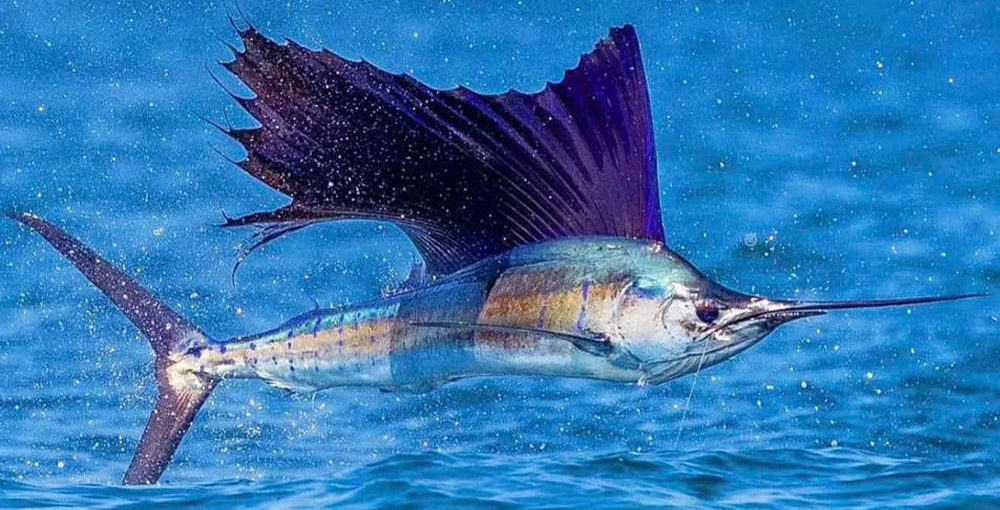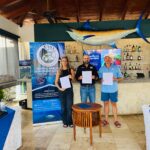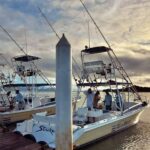
PhD. Consultant Data Analysis
(Translated by Google Translate) Recreational fishing in Costa Rica, which includes sport and tourist fishing, is a great generator of employment and development in our coastal communities, supporting nearly 33 thousand total jobs and generating more than US$520 million to the national economy each year. Costa Rica is known as a premium destination for recreational sailfish and marlin fishing; More than 150 thousand tourists come to the country every year to carry out this activity. In recreational fishing, these species are released immediately after capture, constituting a sustainable activity with low environmental impact.
Other regulations designed to minimize the impacts on these species in this type of fishing include the prohibition of taking specimens into the boat to take photographs, and the mandatory use of circle hooks. Decision makers recognized the importance of these species for coastal communities and implemented these conservation measures. In Costa Rica, however, commercial fishing for these species is still permitted, which has resulted in an increase in sailfish and marlin landings in the last decade. This increase coincides with evidence of a decrease in the availability of sailfish for fishing tourism.
A study recently published in the international scientific literature analyzed the availability of sailfish for the tourist fleet over the last 15 years and recorded that the number of “raised” sailfish (attracted to lures but not physically captured) has indeed decreased. significantly. Furthermore, in that same study it was found that this decrease is related to the increase in sailfish landings by the commercial fleet. The negative effect of commercial fishing is additional to the effect of natural seasonal variations in fish abundance and changes in sea temperature associated with climate change.
Certain groups have attempted to invalidate these results by arguing that variation in sailfish abundance should have been measured in terms of standardized Catch Per Unit Effort (CPUE), although they did not show what would happen if sailfish abundance were calculated in this way. Therefore, the available data were reanalyzed using the best methods provided in the relevant up-to-date scientific literature. This with the objective of determining whether the conclusions of the study published, evaluated and endorsed by several international specialists, would be maintained when using the suggested methodology.
This type of analysis requires at least knowing the number of fish lifted or released per month, and the number of trips made per month for a considerable number of years (7 or more). Data from the tourist fishing fleet was used, including all sources that shared their historical reports with these minimum requirements, collecting more than 15,000 daily records of sailfish lifted or released, corresponding to 175 boats that fished on the high seas – the habitat of the sailfish – between 2008 and 2023, leaving tourist fishing centers in the central and southern Pacific of the country.
Catch per standardized unit of effort per hour was calculated by dividing the number of sailfish recorded in the day by the number of fishing hours in the day for each boat. For comparison, it was also calculated per fishing trip, by dividing the number of individuals in the month by the number of trips made in that month. CPUEs were standardized using all variables reported by the tourist fishing community for this analysis, including year, month, boat, and captain in charge of the boat.
The decrease is consistent
The results show that the CPUE of sailfish released per hour has decreased about 30% in the last decade, while the CPUE per trip has decreased more than 60% in the last decade. Analysis with sailfish lifted rather than released shows a very similar pattern of decline. It was evaluated whether the decrease in standardized CPUE detected is related to changes in water temperature and/or with the amount of sailfish that have been landed by the commercial fleet at national docks (INCOPESCA data).
The result of this analysis shows that the decrease in the availability of sailfish for the tourist fishing fleet is clearly related to the increase in the amount of sailfish landed by the commercial fishing fleet in recent years. The negative statistical effect of commercial fishing on sport fishing is additional to the effect of the change in sea temperature that has occurred over time.
In conclusion, the decrease in sailfish catch recorded by the tourist fleet in the Pacific waters of Costa Rica is robust enough to be detected through a variety of measurement methods and statistical analysis.





















